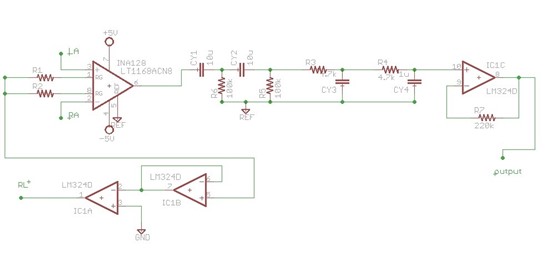I came across this basic 3 lead ECG circuit using INA 128.
Please help me in understanding how to use the REF pin here. Also GND pin has been mentioned here in the right leg drive part. Are REF and GND used interchangeably here?
Should we consider driving the REF pin through an unity buffer with some voltage?
Please help us point out any anomaly in this circuit.
We managed to get a not so good looking ECG signal once, but we are not getting output consecutively in the next trials.
What could we be doing wrong? Our output was obtained on a DSO. We had tried using audio jack on laptop to get the signal but we couldn't get any positive outcome from that method as well.
I would be grateful if you can help us smoothen some issues, mainly regarding connection of REF pin.


